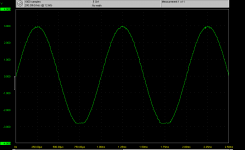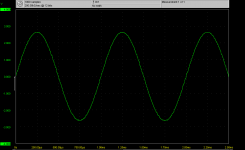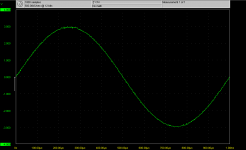in my post 36, the rca male with the small 'reducer end' is a cheap one from parts express. one of the mid-priced store-brand units.
"Different" can be interpreted in various ways in english but I take it is somewhat less good then 🙂 I'll skip it anyway as I can not try every chip on the block.
I am surprised by the quality of ES9023 but it needs work to make it perform optimally. It can bring incredible performance (with respect to the price).
I am surprised by the quality of ES9023 but it needs work to make it perform optimally. It can bring incredible performance (with respect to the price).
Last edited:
Different means different, not better or worse.
We are not done with this one yet.
Our ES9022 evolved through 6 or 7 versions throughout a period of 2 years.
So we'll also take our time also with the 5102.
Patrick
We are not done with this one yet.
Our ES9022 evolved through 6 or 7 versions throughout a period of 2 years.
So we'll also take our time also with the 5102.
Patrick
again, I'm not talking about subtle things, here. not psu or keeping digital lines clean.
when I put high level (near 0db) signals in, they clip and sound very bad. I can't see how anyone can 'fix' this other than to pre-attenuate at the digital level *before* the chip gets its hands on it. and that's not acceptable for me in a simple use-case.
I called this chip a 'cell phone chip' since cellphones and mp3 players can easily lower the digital levels before sending to the chip, but for audio guys who do NOT want to preprocess the stream, I see no way to fix this bug!
the problem is not always there, that's why I first thought the chip was ok. its not until you hit a special sequence that it triggers the bug.
I think you have not hit this bug yet or you would not just gloss over it with 'weasel words' such as 'well it sure sounds different'.
I would not call CLIPPING *different*. I'd call it crap sound and unacceptable.
if you are serious about this chip, please test this very issue and report back.
when I put high level (near 0db) signals in, they clip and sound very bad. I can't see how anyone can 'fix' this other than to pre-attenuate at the digital level *before* the chip gets its hands on it. and that's not acceptable for me in a simple use-case.
I called this chip a 'cell phone chip' since cellphones and mp3 players can easily lower the digital levels before sending to the chip, but for audio guys who do NOT want to preprocess the stream, I see no way to fix this bug!
the problem is not always there, that's why I first thought the chip was ok. its not until you hit a special sequence that it triggers the bug.
I think you have not hit this bug yet or you would not just gloss over it with 'weasel words' such as 'well it sure sounds different'.
I would not call CLIPPING *different*. I'd call it crap sound and unacceptable.
if you are serious about this chip, please test this very issue and report back.
Let's forget this one as it is not a serious candidate without extra electronics which will make it as expensive as a better DAC chip. Waste of time !
Out of curiosity, I did some measurements.
In my setup, the PCM5102 uses a 45.15MHz XO, 3.3V power supplies (3x), and has I2S input at 16 bit 44.1kHz.
The measured signal is taken directly at the IC output pin, without the datasheet 470R-2.2nF low pass filter.
Indeed there is clipping at the negative rail at full 0dB output.
The charge pump does not generate the full -3.3V, and hence the output opamps run out of voltage.
The clipping is gone for -1dB signals. And this can be solved without too much effort even for 0dB.
A similar problem exists also for the ES9022, which is why they brought out the 9023 to run on +3.6V supplies.
In real music material, this (0dB signals) hardly occurs.
Or at least in my own CD collection, I don't have anything that goes the full output amplitude.
We shall certainly continue to play around with this.
I particularly like the low latency filter.
🙂
Patrick
In my setup, the PCM5102 uses a 45.15MHz XO, 3.3V power supplies (3x), and has I2S input at 16 bit 44.1kHz.
The measured signal is taken directly at the IC output pin, without the datasheet 470R-2.2nF low pass filter.
Indeed there is clipping at the negative rail at full 0dB output.
The charge pump does not generate the full -3.3V, and hence the output opamps run out of voltage.
The clipping is gone for -1dB signals. And this can be solved without too much effort even for 0dB.
A similar problem exists also for the ES9022, which is why they brought out the 9023 to run on +3.6V supplies.
In real music material, this (0dB signals) hardly occurs.
Or at least in my own CD collection, I don't have anything that goes the full output amplitude.
We shall certainly continue to play around with this.
I particularly like the low latency filter.
🙂
Patrick
Attachments
Last edited:
Very quick & dirty, but problem solved. 🙂
I forgot to mention that the output was loaded with a 600R load in my setup (headphone with series resistor).
The charge pump generated -3.16V with a +3.3V supply, and is somewhat load dependent.
So loading it less (say RL 0 10k) will probably also remove the "problem".
Back to some more listening .....
Patrick
I forgot to mention that the output was loaded with a 600R load in my setup (headphone with series resistor).
The charge pump generated -3.16V with a +3.3V supply, and is somewhat load dependent.
So loading it less (say RL 0 10k) will probably also remove the "problem".
Back to some more listening .....
Patrick
Attachments
Last edited:
the clipping I refer to is NOT analog based.
it happens when you run too hot a DIGITAL signal to the chip. that's what gibbs is all about.
this was never a PSU or buffer issue, at least in the problem I was having.
it happens when you run too hot a DIGITAL signal to the chip. that's what gibbs is all about.
this was never a PSU or buffer issue, at least in the problem I was having.
I do not consider e.g. a 0dB square wave to be a realistic music signal, if that is what you were referring to.
Patrick
Patrick
It seems a flawed product when digital and analog clipping can occur (but a 0 dB square wave is indeed unrealistic).
Probably is not enough.
So loading it less (say RL 0 10k) will probably also remove the "problem".
Probably is not enough.
Last edited:
The "analogue" clipping was gone when I removed the headphone and changed back to 10k load.
I have not seen any evidence of digital clipping, and there are no other similar reports on the inet.
No test conditions, no oscilloscope plot, .....
I just spent 5 hours listening to it.
It is going to take the place of my ES9022 for a while.
😉
Patrick
I have not seen any evidence of digital clipping, and there are no other similar reports on the inet.
No test conditions, no oscilloscope plot, .....
I just spent 5 hours listening to it.
It is going to take the place of my ES9022 for a while.
😉
Patrick
Have fun with it ! That's what it is about. I will go on with ES9023 on 3.6V for a while. I still have to compare with FN1242a.
BTW data sheet of PCM5102 says it can be loaded till 1 kOhm so there is something not right here...
BTW data sheet of PCM5102 says it can be loaded till 1 kOhm so there is something not right here...
Last edited:
I do not consider e.g. a 0dB square wave to be a realistic music signal, if that is what you were referring to.
the cd (flac) I was listening to was not a function generator output, lol. maybe I should cut a sample and post it so that others can try. artist was loreena mckennit and there were some very low bass notes that, along with the music, just seemed to sum up to a very high near-zero level. hey, its how they are mixing and releasing music these days; expect more and more of this problem, not less and less ;(
at first I thought I had a bad rip. it was that bad. was it my phones or phones amp? the dac? the player? man, it sounded bad. I had to verify it all and it sure looked like the badness went away when I kept everything BUT the dac.
so, maybe a sample/clip would help. I'll try to do that. what's the legal limit on how much I can clip and post for demo use? is 10 secs of music enough? that might be enough to show the bug.
(for those that have LM's cd's; its the ancient muse cd, 2nd song).
Send me a email, and I'll give you a email address to send the clip to.
I will then repeat your test and report back.
I have as much an interest as you to find out the facts.
And if it can be proven, we could file a complain to TI and let them sort it out.
It is a good product otherwise.
Patrick
PS Please send me in WAV and not FLAC.
I cannot play FLAC.
Or try playing WAV and see if you still has the problem first.
I will then repeat your test and report back.
I have as much an interest as you to find out the facts.
And if it can be proven, we could file a complain to TI and let them sort it out.
It is a good product otherwise.
Patrick
PS Please send me in WAV and not FLAC.
I cannot play FLAC.
Or try playing WAV and see if you still has the problem first.
Last edited:
> data sheet of PCM5102 says it can be loaded till 1 kOhm
My phone is 200R, and it has a 240R series resistor.
So a bit less than 1k.
In normal line level use, it is no issue at all.
So I consider this academic.
You can also use a 3.6V supply and the "problem" is gone.
Patrick
My phone is 200R, and it has a 240R series resistor.
So a bit less than 1k.
In normal line level use, it is no issue at all.
So I consider this academic.
You can also use a 3.6V supply and the "problem" is gone.
Patrick
- Status
- Not open for further replies.
- Home
- Source & Line
- Digital Line Level
- PCM5102, 2VRMS ground centered direct output with two digital filters




